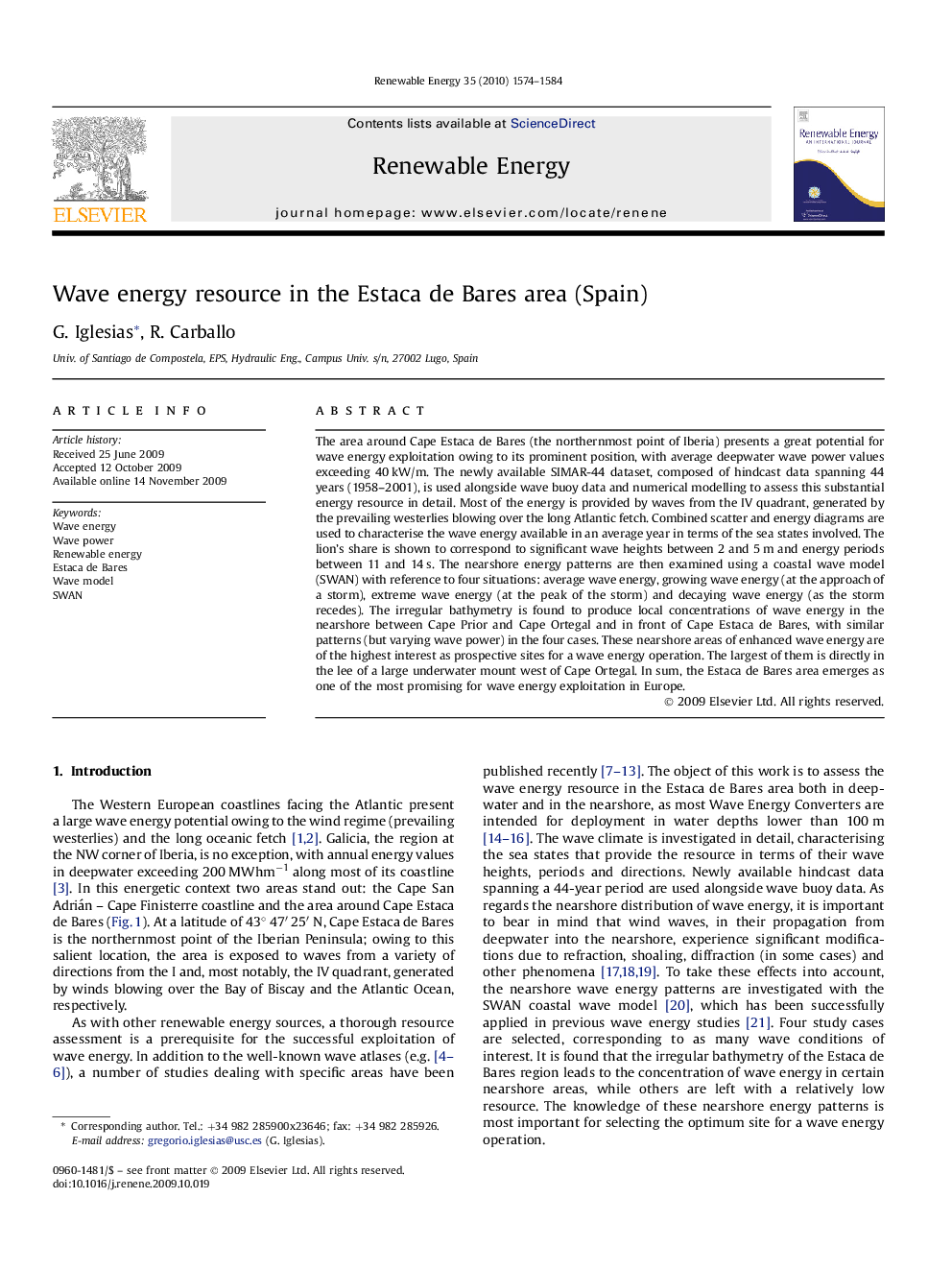| Article ID | Journal | Published Year | Pages | File Type |
|---|---|---|---|---|
| 301844 | Renewable Energy | 2010 | 11 Pages |
The area around Cape Estaca de Bares (the northernmost point of Iberia) presents a great potential for wave energy exploitation owing to its prominent position, with average deepwater wave power values exceeding 40 kW/m. The newly available SIMAR-44 dataset, composed of hindcast data spanning 44 years (1958–2001), is used alongside wave buoy data and numerical modelling to assess this substantial energy resource in detail. Most of the energy is provided by waves from the IV quadrant, generated by the prevailing westerlies blowing over the long Atlantic fetch. Combined scatter and energy diagrams are used to characterise the wave energy available in an average year in terms of the sea states involved. The lion's share is shown to correspond to significant wave heights between 2 and 5 m and energy periods between 11 and 14 s. The nearshore energy patterns are then examined using a coastal wave model (SWAN) with reference to four situations: average wave energy, growing wave energy (at the approach of a storm), extreme wave energy (at the peak of the storm) and decaying wave energy (as the storm recedes). The irregular bathymetry is found to produce local concentrations of wave energy in the nearshore between Cape Prior and Cape Ortegal and in front of Cape Estaca de Bares, with similar patterns (but varying wave power) in the four cases. These nearshore areas of enhanced wave energy are of the highest interest as prospective sites for a wave energy operation. The largest of them is directly in the lee of a large underwater mount west of Cape Ortegal. In sum, the Estaca de Bares area emerges as one of the most promising for wave energy exploitation in Europe.
